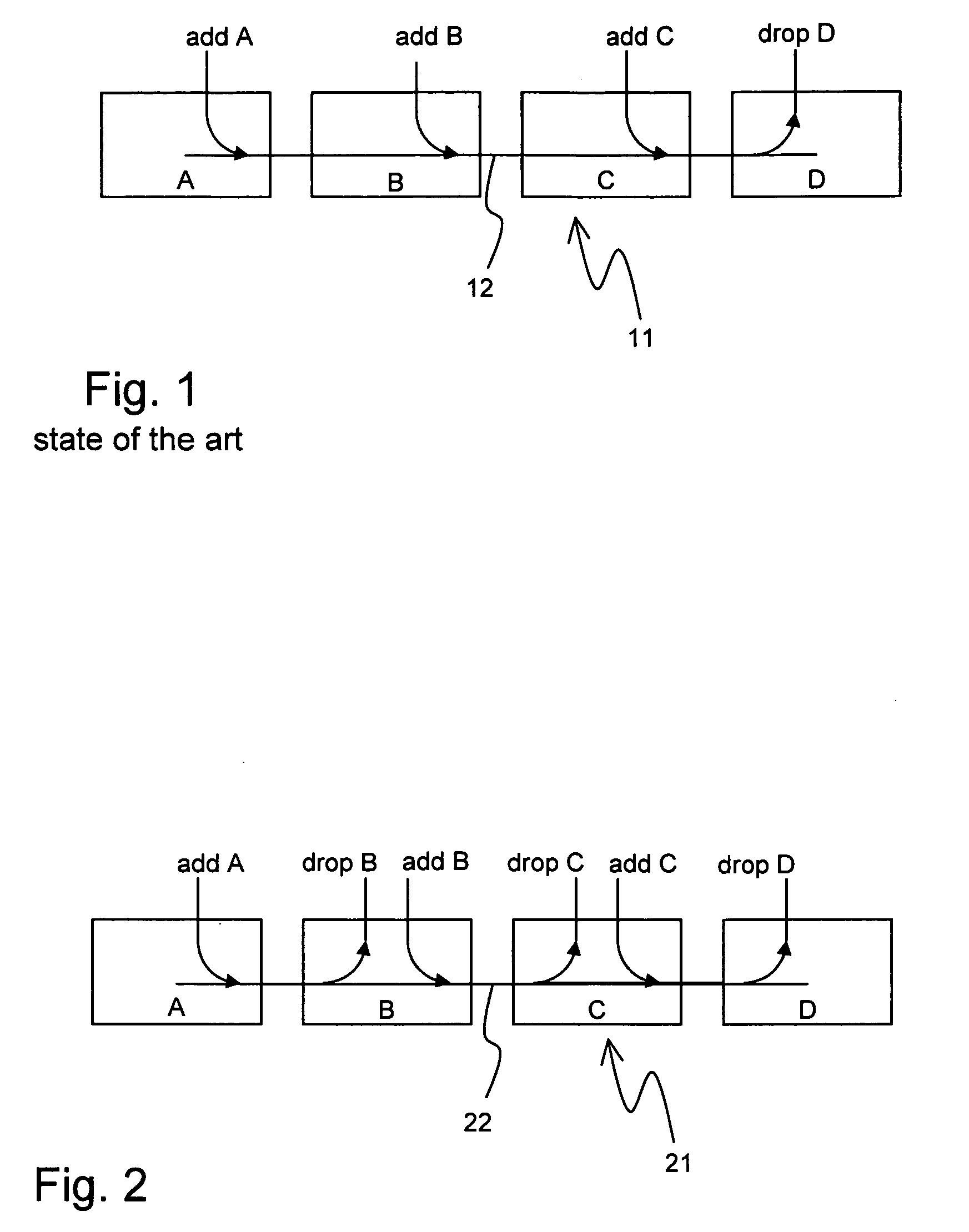Method for operating a packet based data network
a packet-based data network and data network technology, applied in data switching networks, store-and-forward switching systems, instruments, etc., can solve the problems of large amount of unused data transfer capacity (i.e. bandwidth) on the bus, limited bus data transfer capacity, and inability to find data transfer capacity at the end of the bus, so as to improve data transfer capacity and efficient use of bus data transfer capacity
- Summary
- Abstract
- Description
- Claims
- Application Information
AI Technical Summary
Benefits of technology
Problems solved by technology
Method used
Image
Examples
Embodiment Construction
[0043] The invention relates to an improved fairness mechanism for access control to multipoint-to-multipoint networks.
[0044] Fairness mechanisms are known from the state of the art for a multipoint-to-point network. Such a network is shown in FIG. 1. The multipoint-to-point network 11 comprises four nodes A, B, C, D, and a shared data bus 12. The overall data flow is directed towards note D at the end of the data bus 12. At nodes A, B, C, data is fed into the bus 12, as marked with add A, add B, add C. At the end node D, all data is dropped out of the network 11.
[0045] The data bus 12 has only a limited data transfer capacity. In order to guarantee that the intermediate notes B, C have the possibility to add a minimum amount of data to the bus 12, part of the data transfer capacity of the data bus 12 is reserved for the nodes B, C. This is done by means of a so called traffic control architecture using remote descriptors (TCARD) which uses a preventive mechanism to grant access t...
PUM
 Login to View More
Login to View More Abstract
Description
Claims
Application Information
 Login to View More
Login to View More - R&D
- Intellectual Property
- Life Sciences
- Materials
- Tech Scout
- Unparalleled Data Quality
- Higher Quality Content
- 60% Fewer Hallucinations
Browse by: Latest US Patents, China's latest patents, Technical Efficacy Thesaurus, Application Domain, Technology Topic, Popular Technical Reports.
© 2025 PatSnap. All rights reserved.Legal|Privacy policy|Modern Slavery Act Transparency Statement|Sitemap|About US| Contact US: help@patsnap.com



